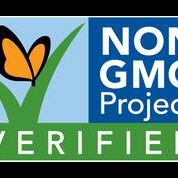You’ve probably heard the term “GMO” or, Genetically Modified Organism, in the media or online. GMOs can be found in up to 70% of packaged food in America, but a lot of us don’t really know what it is or what it means. Enter: The Simple Guide to Non-GMO.

What is a GMO?
In a nutshell, a GMO is a plant, animal or microorganism that has had its DNA altered in a way that doesn’t occur naturally. Selected genes are transferred from one organism to another or between unrelated species. GMOs can also include genes that are removed or changed within a single organism. The process is commonly referred to as biotechnology or genetic engineering.
Why and where are we creating GMOs?
Scientists began genetic modification in hopes to make food last longer, grow faster or larger, or resist insects. A lot of GMOs are consumed through fioods like sugar beets, corn, wheat and soy. But you can find GMOs everywhere; the FDA doesn’t currently allow genetic modification of meat but many farm animals and fish are fed GMO feed to make these animals grow larger and faster than normal. GMOs may enter our food supply through meat and fish as a result.
How do GMOs affect me?
That is the (HOT!) question. Many in the food industry have argued for years that GMOs are safe. GMO opponents argue that they have not been tested enough and that they may be creating new allergens, bacteria and viruses that have not been present in our food before. There have also been studies that suggest the potential of more serious health effects in humans. What is certain is that GMOs have increased the use of herbicides, or weed killers. This is creating a cycle where new herbicide-resistant weeds pop up, and then more new herbicide chemicals are being created and used. This has also raised concerns for humans, animals, and the environment.
How do I spot GMOs in the wild?
Companies are not currently required to disclose that their products contain GMOs. But if you’d like to avoid GMOs, there are a growing number of food companies today that do not use GMOs in their products, and clearly note this by displaying the Non-GMO Project Verified label. This organization is a non-profit that helps verify GMO-free consumer products. It can also help to be familiar with the most common genetically altered foods, including soy, wheat, corn, and other items.
.jpeg.aspx?lang=en-US)
What's next for GMOs?
Because of consumer concern over GMO foods, many traditional Big Food brands are starting to change to non-GMO or offer GMO-free alternatives. Whether GMOs in our food are safe or not will likely continue to be debated. But consumers are increasingly given more choice and more food companies than ever offer foods without genetically modified ingredients.